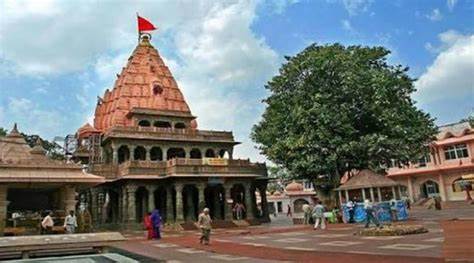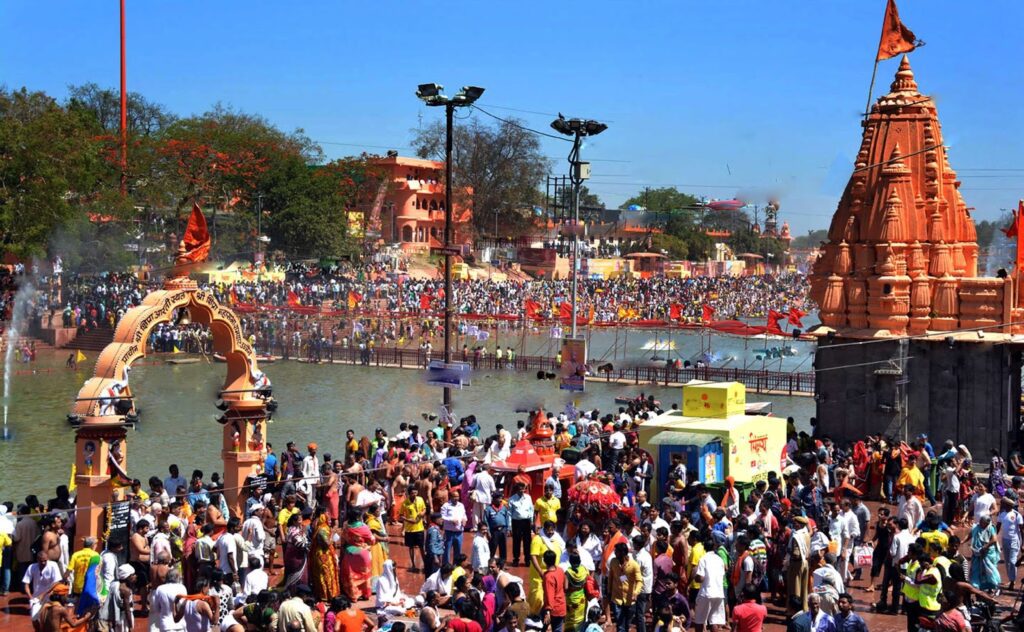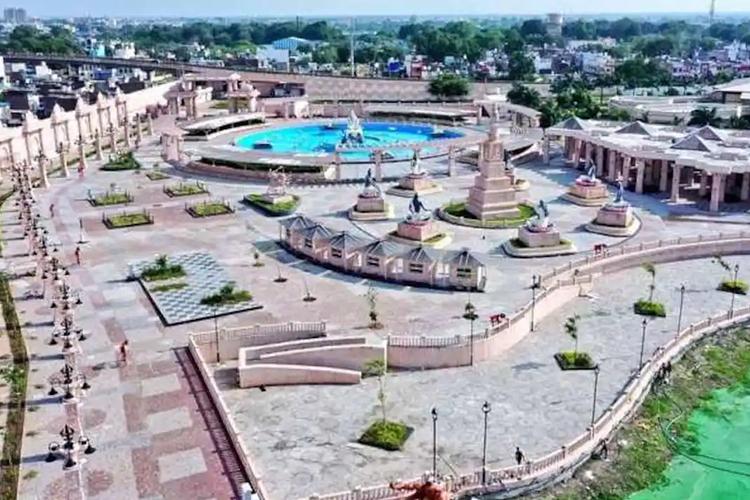Explore Ujjain

One of the twelve Jyotirlingas, or shrines, considered to be Shiva’s most sacred residences, is the Hindu temple devoted to him named Mahakaleshwar Jyotirlinga. It is situated in Madhya Pradesh, India, in the historic city of Ujjain. The shrine is located alongside the revered Shipra River. As opposed to other images and lingams that are ritually erected and endowed with mantra-shakti, the presiding god, Shiva in the lingam form, is thought to be Swayambhu and derives currents of force (Shakti) from within itself.
There are two Jyotirlingas in Madhya Pradesh; Omkareshwar Jyotirlinga is located 140 kilometres south of Mahakaleshwar Jyotirlinga.
The Temple
Mahakaleshwar’s idol is said to be dakshinamukhi, which indicates that it is facing south. This is a special quality that can only be found in Mahakaleshwar among the 12 Jyotirlingas, according to the tantric shivnetra tradition. In the sanctum above the Mahakal shrine, the idol of Omkareshwar Mahadev is dedicated. In the west, north, and east of the sanctum sanctorum are the images of Ganesh, Parvati, and Karttikeya respectively. The representation of Shiva’s chariot, Nandi, is located to the south. Only on the day of Nag Panchami is the idol of Nagchandreshwar on the third floor accessible for darshan. One of the temple’s five floors is underground.
The actual temple is situated close to a lake in a large courtyard enclosed by high walls. The spire, or shikhar, is embellished with exquisite sculpture. The entrance to the underground sanctuary is lit by brass lamps. In contrast to other shrines, it is thought that the prasada (holy offering) made to the deity here can be repeated.
In the city of Ujjain, Shiva, the god who rules over time, reigns eternally in all his magnificence. The temple of Mahakaleshwar, with its sky-touching shikhar and majestic façade against the skyline, inspires awe and veneration from the beginning of time.
Even in the midst of the hectic routine of contemporary concerns, the Mahakal rules the city and its inhabitants’ lives and offers an enduring connection to old Hindu customs.
A sizable bazaar is held next to the temple on the day of Maha Shivaratri, and worship continues all night long.
During the visit, devotees are not permitted to carry bags, cellphones, or cameras. There are lockers and cloak rooms available for followers to store their items in.
One of the world’s most remarkable human gatherings is the Kumbh Mela. The fair, which takes place in India, honours the legendary Samudra Manthan occasion from Hindu mythology. Just once every twelve years does the fair take place for twelve days, which correspond to the twelve years that the Hindu gods spend in the mortal realm. This massive carnival is held at many locations along rivers, including the banks of the Ganga at Haridwar, the Godavari at Nashik, the Yamuna, Saraswati, and Ganga rivers coming together at Allahabad, and the Kshipra river at Ujjain.
Every three years, one of the four cities—Haridwar, Allahabad, Nasik, and Ujjain—hosts the Kumbh. 2016 saw the final Kumbh Mela at Ujjain.


The 900-meter-long corridor is one of the longest in India, according to reports. Rudradsagar Lake, which was also resurrected as part of the project, is skirted by it.
A short distance from the beginning of the corridor, which twists its way to the entrance of the ancient temple and provides stunning vistas along the way, two imposing gateways, Nandi Dwar and Pinaki Dwar, have been built. The passageway is dotted with about 108 pillars that have trishul-style ornamentation on top.
Other notable features include a grand column of 108 elaborately carved sandstone pillars and a panel with more than 50 murals illustrating tales from the Shiva Puran. There is a statue of Lord Shiva in the middle of a lotus pond with fountains.
The holy city of New Ujjain is home to Jantar Mantar or Vedh Shala. Maharaja Jai Singh II constructed an observatory in 1725 that included 13 architectural astronomical instruments. One of the five observatories King Jai Singh II constructed while serving as governor of Ujjain is the observatory.
Vedh Shala was built with the intention of determining eclipses, local time, height (of the location), as well as the declination of the Sun, stars, and planets. Many specialised equipment were also used to record the motion, speed, and characteristics of stars and planets.


